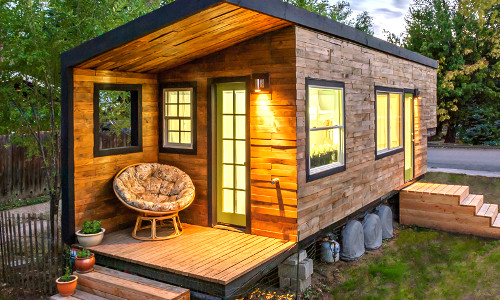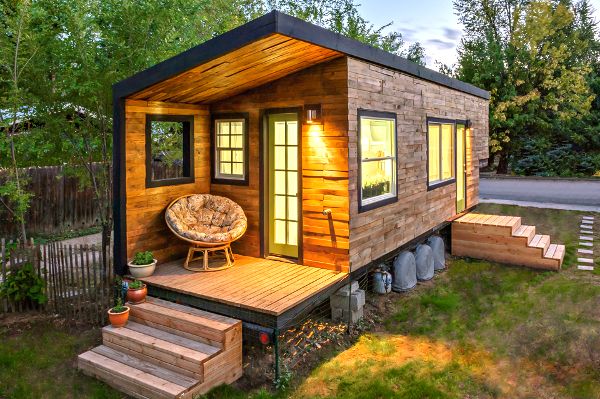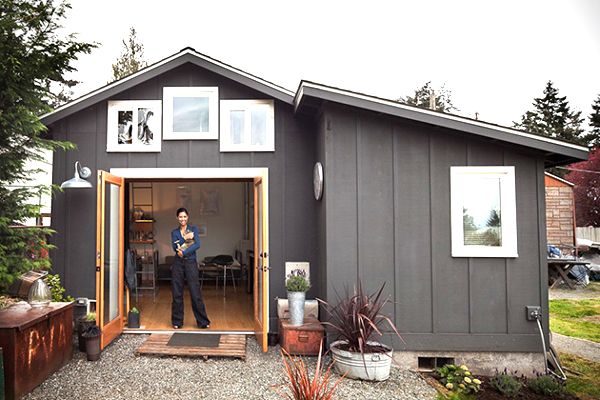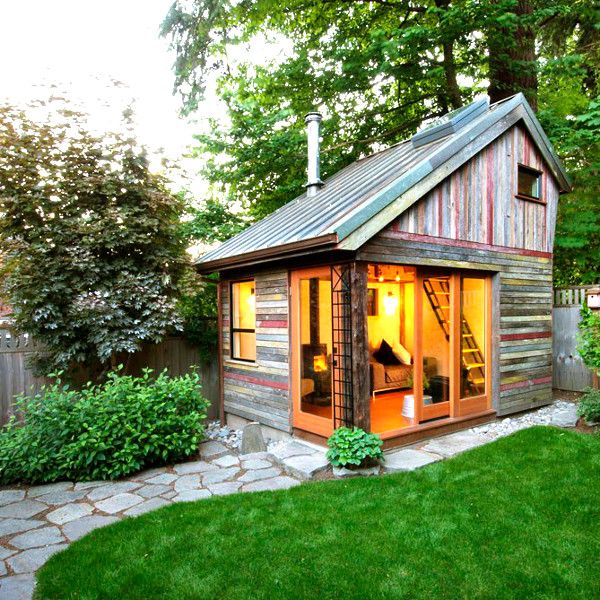

For a long time in America, the dominant mentality was always “bigger is better.” Finally, “small is beautiful” is having its moment. Tiny houses offer a viable solution for people looking to reduce their environmental impact and live more simply.
“Micro-living,” as its proponents call it, is becoming increasingly popular. Tiny houses are even being touted as an affordable way to house the homeless. And nothing says these homes have to be boring and ugly. Don’t believe me? Check out these 10 beautiful tiny houses:
1. This tiny house, the “Wedge,” is designed and built by Wheelhaus. The “Wedge” features an angled roof which starts low in the bedroom and builds to 17 feet in the living room. The front is almost entirely glass, which gives the house an open feeling with plenty of natural light. The starting price is $89,000.
2. Don’t have that kind of money to drop? No problem! Macy Miller is just one of the many tiny homeowners who built her own house. It took two years, in which she broke her foot and her back, but also met her future husband (quite the rollercoaster!). It’s portable and it only cost her $11,000.
3. Take a video tour of Steve Areen’s “Dome Home.” He made his tiny house out of mostly natural materials for $9,000 on a mango farm in northeast Thailand. He was offered the space to build it by a friend, the materials were relatively inexpensive and he didn’t have to worry about insulating for cold temperatures. The house features a hammock, a pond and plenty of tropical plants.
https://www.youtube.com/watch?v=02NtjypMHwk
expand=1]
4. Don’t want to buy a house or build from scratch? Michelle de la Vega turned her 250-square-foot garage into a tiny house. And most of the fixtures and the furniture were custom-made for the house or were salvaged or re-purposed by de la Vega.
5. By far, one of the most futuristic looking tiny houses, the “Blob VB3” by the architectural design firm dmvA is an egg-shaped house with a bathroom, kitchen, lighting, a bed and several shelves for storage. There’s a skylight and a door for lighting and air flow, and one entire side opens up to function as a porch.
6. The Nomad Micro Home is a relatively cost effective option for those who want to buy their tiny home. This 100-square-foot house, which costs $30,000, can be shipped to you anywhere in the world and only takes a few days to assemble. The downstairs has a living room, kitchen and bathroom, while the upstairs has a small bedroom. This tiny home comes with solar panels, a rain collection system and large windows, which provides natural light and helps the small space feel larger than it actually it is. As its name suggests, it is portable.
[youtube https://www.youtube.com/watch?v=RSXv1RoV168
7. A sustainable building advisor, Megan Lea, built a backyard retreat with reclaimed local barn wood and copper roofing. It is heated by a wood stove. Lea was frustrated by how poorly that corner of her garden was doing because it got too much shade, so she decided to build a tiny house there. The result is a beautiful little house made of mostly recycled material.
YOU MIGHT ALSO LIKE
How House Plants Keep You Healthy
Hydroponic Planter Makes It Easy to Grow Your Own Indoor Edible Garden

 233k
233k  41k
41k  Subscribe
Subscribe 




